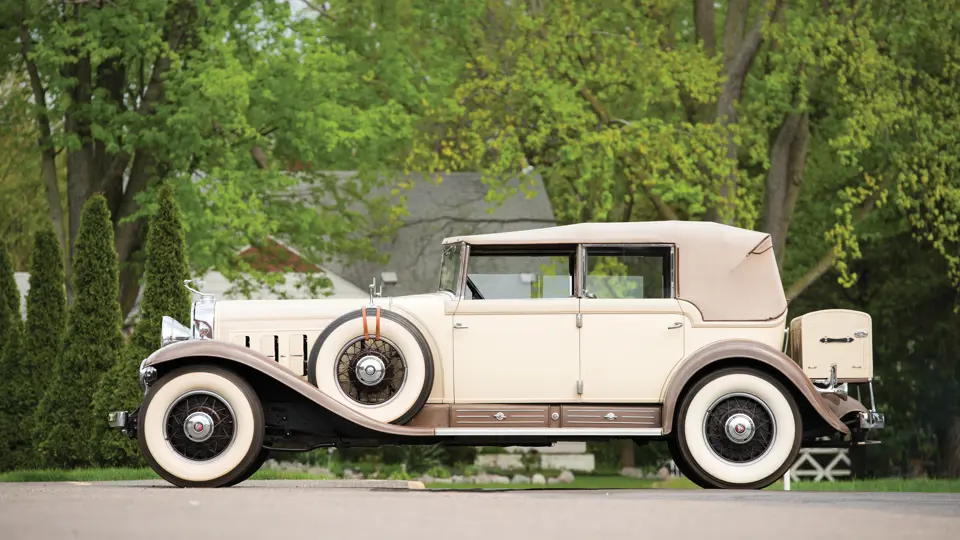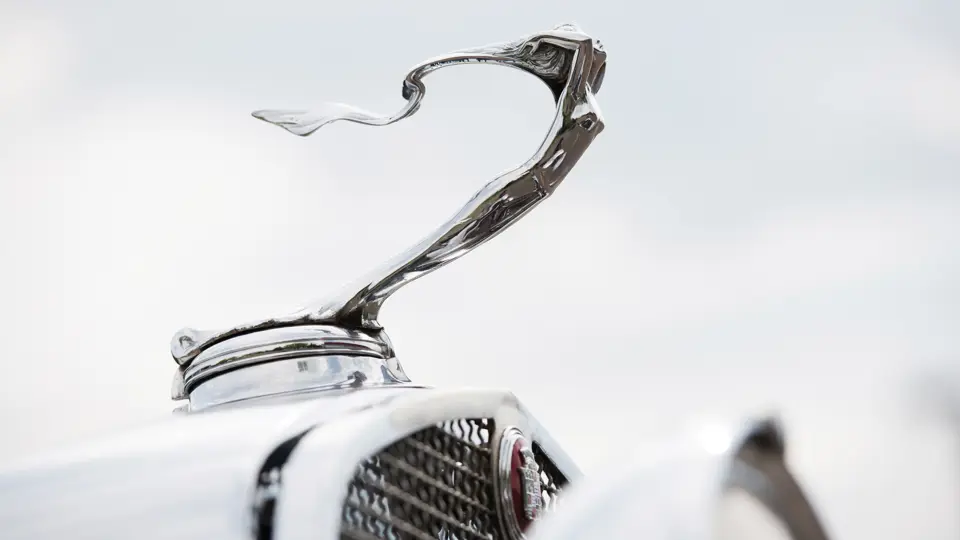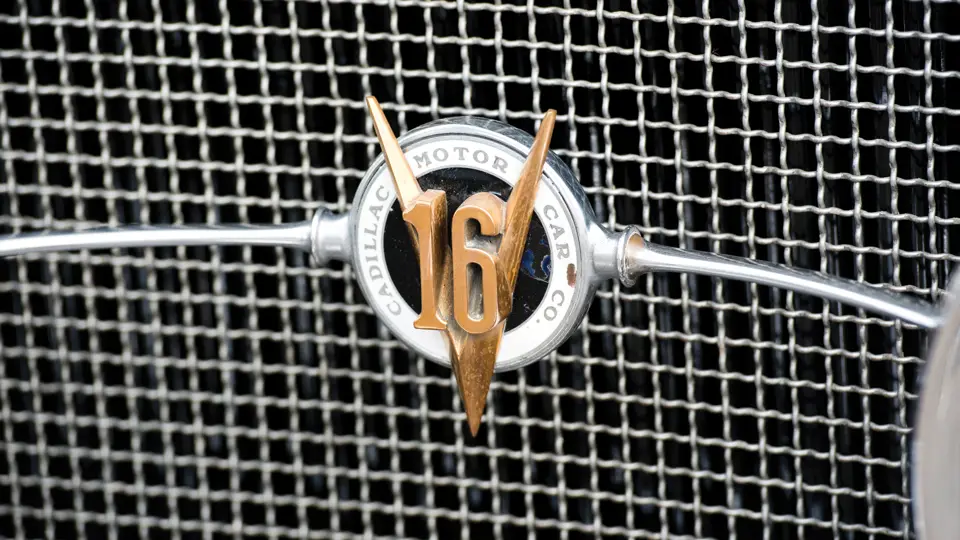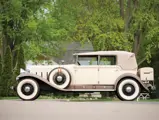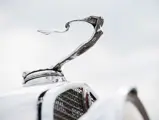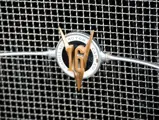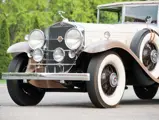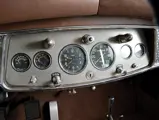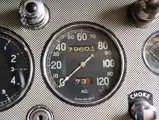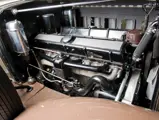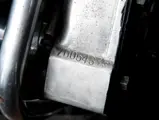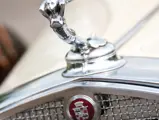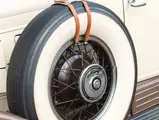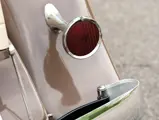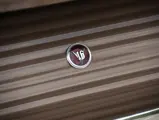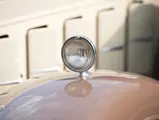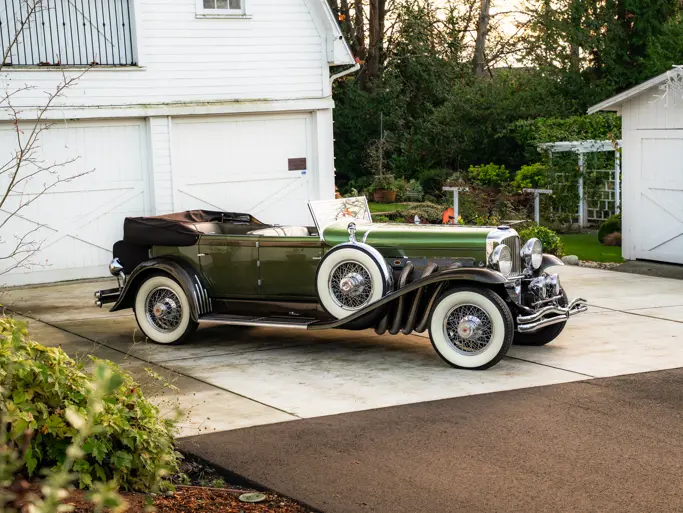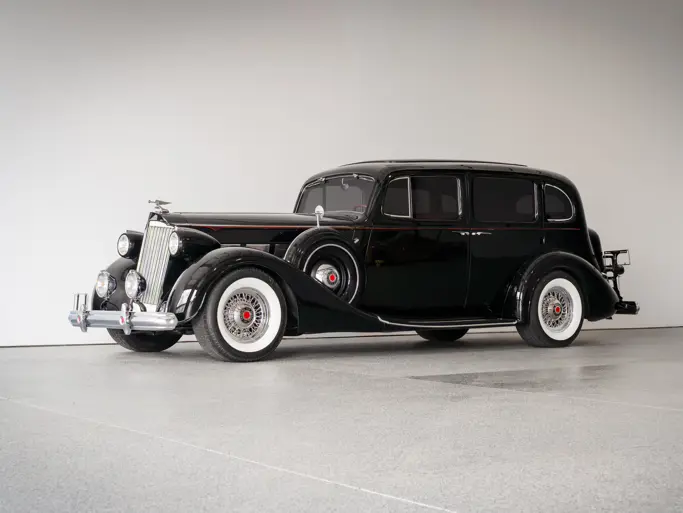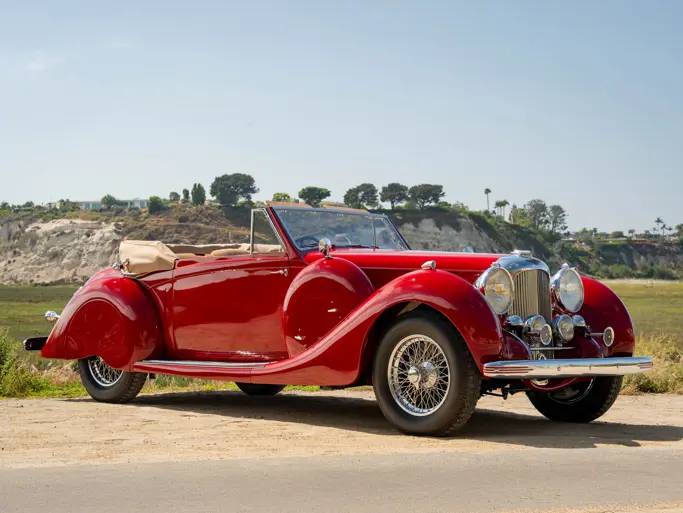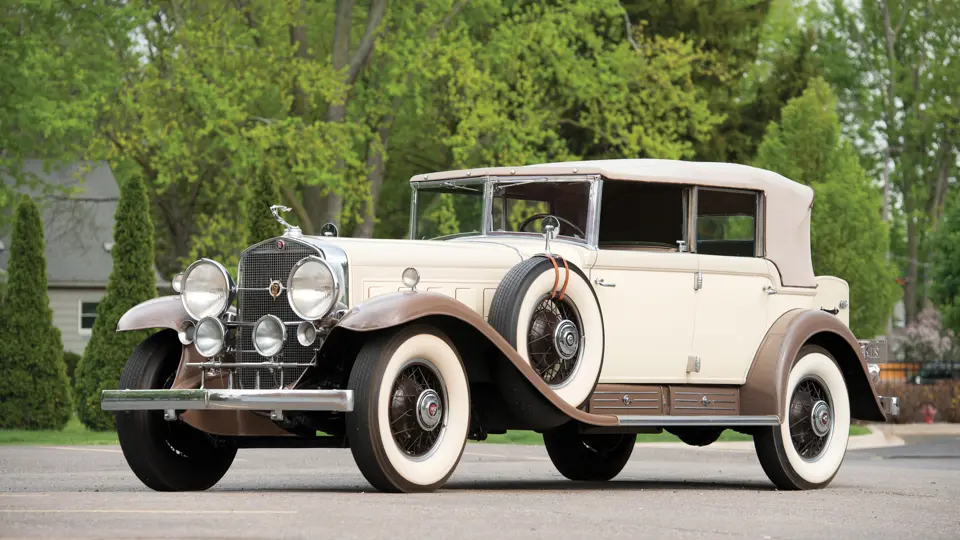
1930 Cadillac V-16 All-Weather Phaeton by Fleetwood
{{lr.item.text}}
$159,500 USD | Sold
From the Richard and Linda Kughn Collection
{{bidding.lot.reserveStatusFormatted}}
- From the collection of Richard and Linda Kughn
- Sixteen cylinders of American power
- One of only 250 built
- Formerly the property of Richard Gold
Series 452. Style 4380. 185 bhp, 452 cu. in. overhead-valve V-16 engine, three-speed manual transmission, front and rear semi-elliptic leaf springs with hydraulic dampers, and four-wheel vacuum-assisted mechanical drum brakes. Wheelbase: 148 in.
On January 4, 1930, Cadillac stunned the fine car market at the New York Auto Show with the introduction of its breathtaking new V-16. With it, Cadillac instantly catapulted itself to the head of the luxury class in one brilliant stroke. Until then, only Bugatti had produced a 16-cylinder engine, which was accomplished by bolting two eight-cylinder inline engines together; an innovation that was originally intended for aircraft use.
Cadillac’s V-16 was the first, true 16-cylinder engine to be built from scratch, a project led by Owen Milton Nacker, under conditions of the utmost secrecy. In order to avoid knowledge of the project leaking from lower-level GM engineering departments and parts suppliers, a well-coordinated disinformation campaign that included cover stories and notes on various blueprints was created, indicating that the project was actually Cadillac’s contribution to a new GM bus project.
The 45-degree cylinder bank angle and overhead-valve design kept the V-16 narrow, while its external manifolds allowed easy access to the engine compartment. Furthermore, Cadillac’s V-16 was the first automotive engine ever to be “styled”; all the wiring was hidden, the engine compartment was dressed up with plenty of gleaming, polished aluminum and porcelain, and it had a pair of beautiful valve covers with brushed aluminum ridged surfaces that featured the Cadillac emblem.
Cadillac managed to survive the rapidly declining luxury-car market of the early 1930s, thanks to the financial resources of GM, its massive parent company. Without this support, Cadillac could never have produced such a limited-production, luxurious automobile. Although the V-16 was brilliantly designed, its shrinking Depression-era market meant that it was, of course, produced in tiny numbers, for those few who were capable of paying more than 10 times the cost of a contemporary Chevrolet convertible. Without doubt, the few examples remaining today offer a rare glimpse into one of the most exciting automotive eras of all time.
The car offered here was the 34th of 250 V-16s built from 1930–1931, and the coachwork on this four-door convertible all-weather phaeton was completed by Fleetwood. Importantly, this body is distinguished as one of the earliest surviving examples; it was built by Fleetwood’s original Pennsylvania factory and is distinguished by its speedboat-like vee’d windshield. A copy of the original build sheet, which accompanies the Cadillac, records it as having been delivered on March 19, 1930, to the Upperu Cadillac Corporation in New York City.
The Cadillac was eventually acquired by the late Richard Gold, of Minnesota. Mr. Gold was a charter member of the Classic Car Club of America, and for many years, he was one of the CCCA’s staunchest supporters and most active members, even serving as a national president. While his collection was large and varied, it was most famous for including some of the best examples of the Cadillac V-16 in the world; all of which were well-cared-for, long-term acquisitions. Reportedly, this very car was the first V-16 in the Gold Collection and was among those he kept for many years. It was pictured on the cover of the June 1975 issue of The Classic Car.
Prior to joining the prominent collection of Richard and Linda Kughn, the V-16 was fully serviced by the well-known shop of Al Prueitt & Sons in Pennsylvania, who rebuilt the engine, transmission, and clutch. It was finished in a subdued two-tone khaki and features an interior upholstered in biscuit tan broadcloth. While a cloth interior seems an unusual choice for an open car, apparently several all-weather phaetons were so-ordered, and it makes sense for a rather formal car that, in all likelihood, was almost always driven with the top raised. Additional accessories include dual side-mounted spares, fender lights, dual horns, an unrestored trunk, and the classic Goddess hood ornament. The car appears largely original in many respects, having apparently never been completely restored, and it shows just over 72,000 miles, which may well be the actual mileage from new.
This is a most stately and elegant Cadillac with legendary engineering, and it would be an ideal choice for freshening and reuniting with friends of years past in CCCA CARavans, or as the solid and complete basis for what will surely be an extremely impressive restoration.
Titled as 1931.
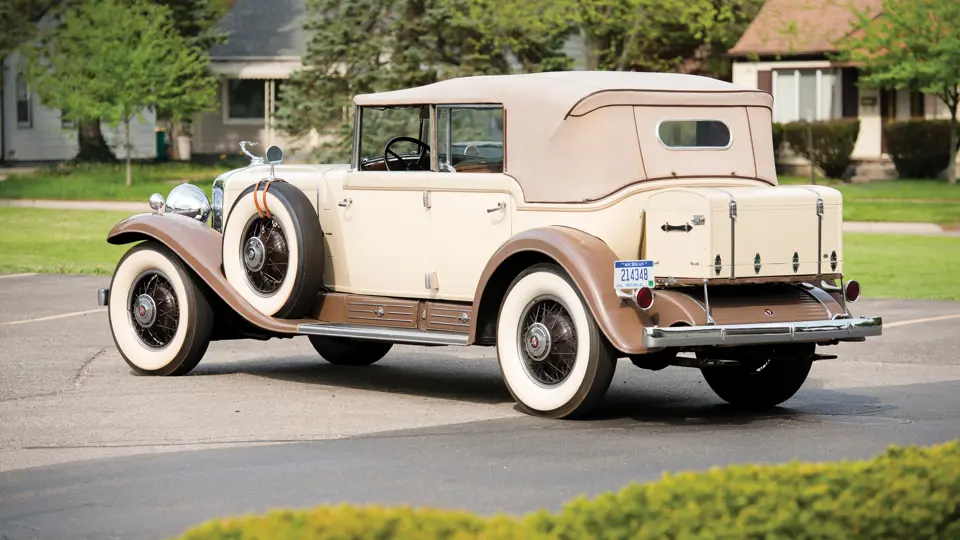
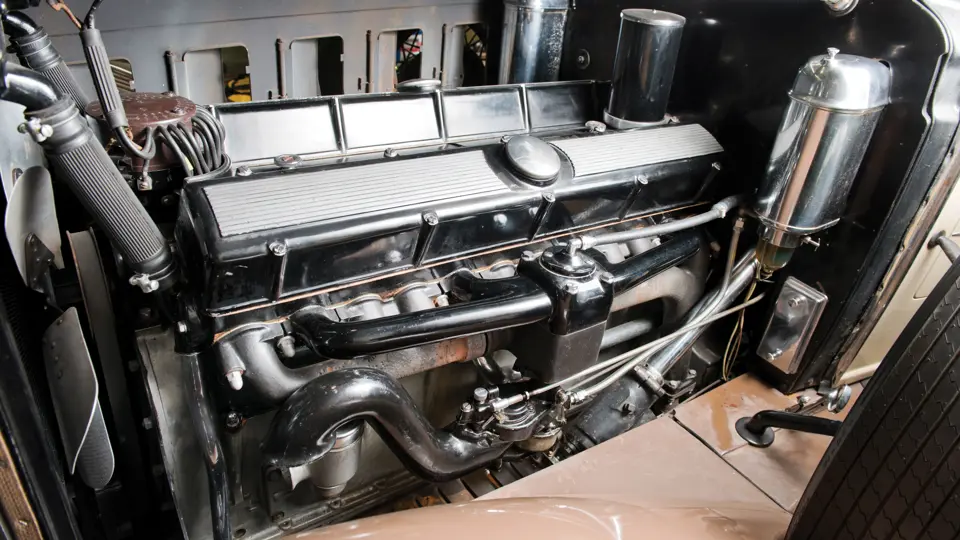
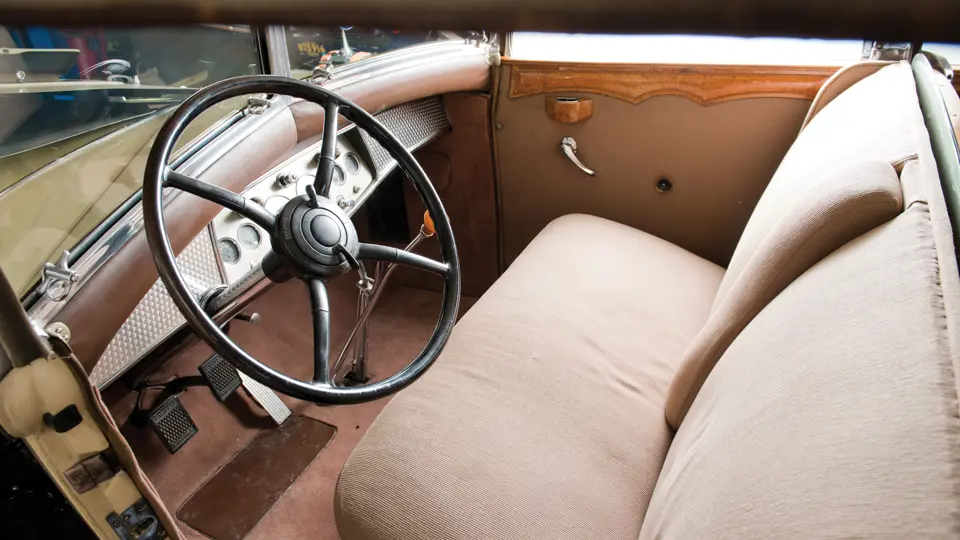

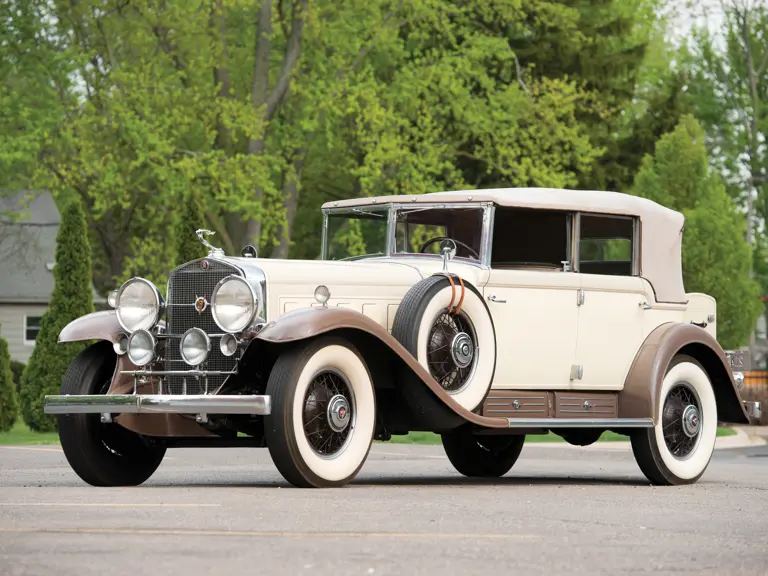
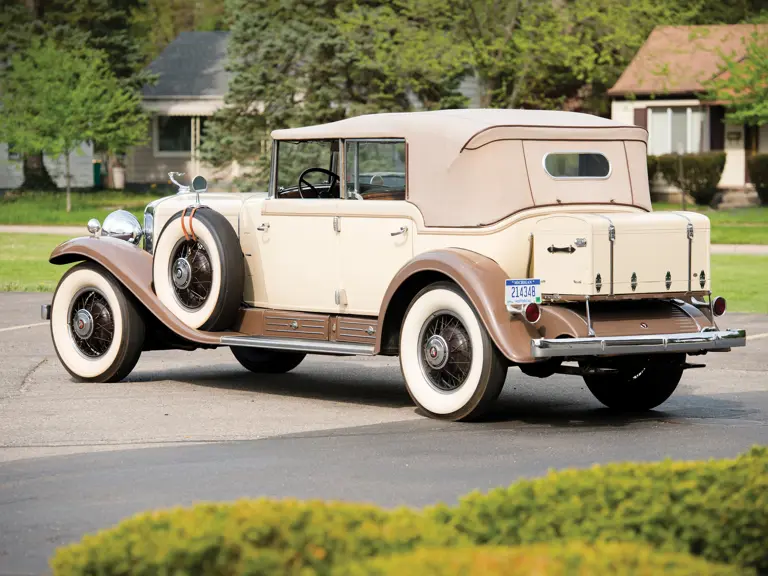
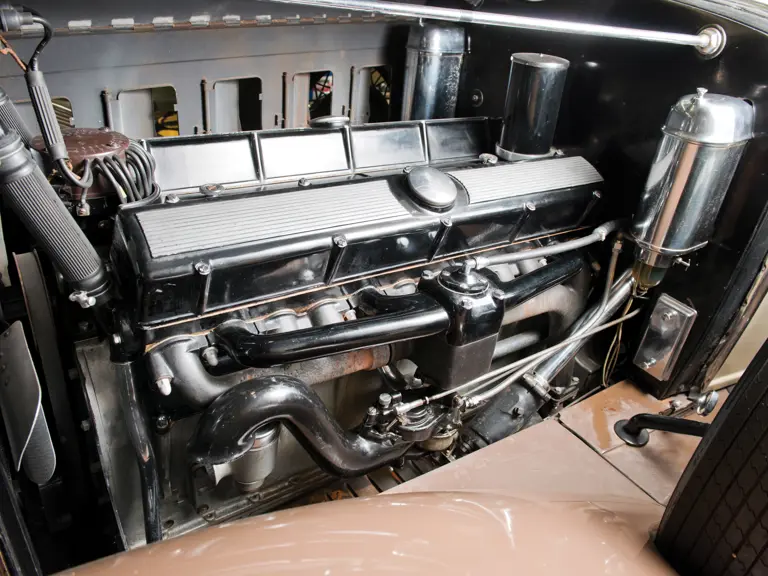
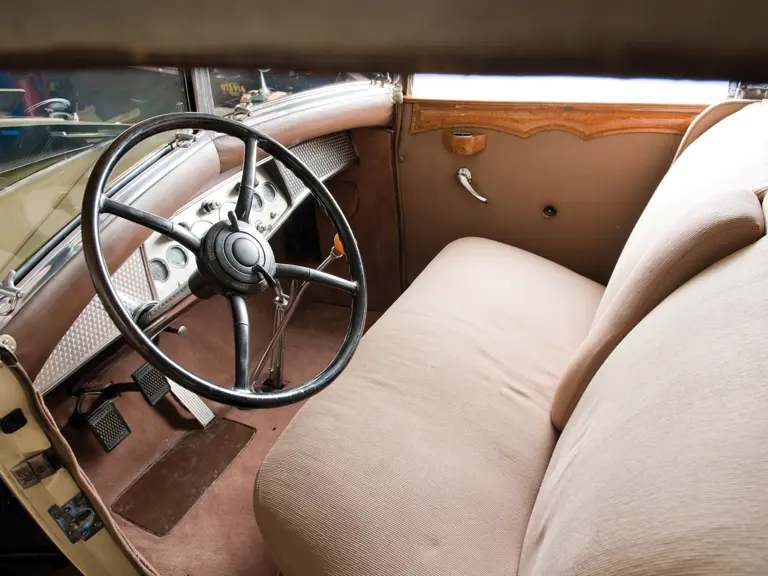

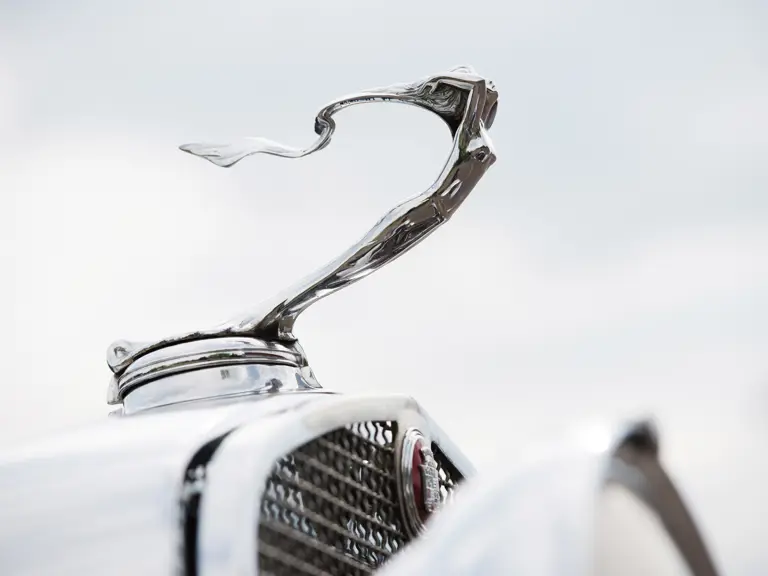
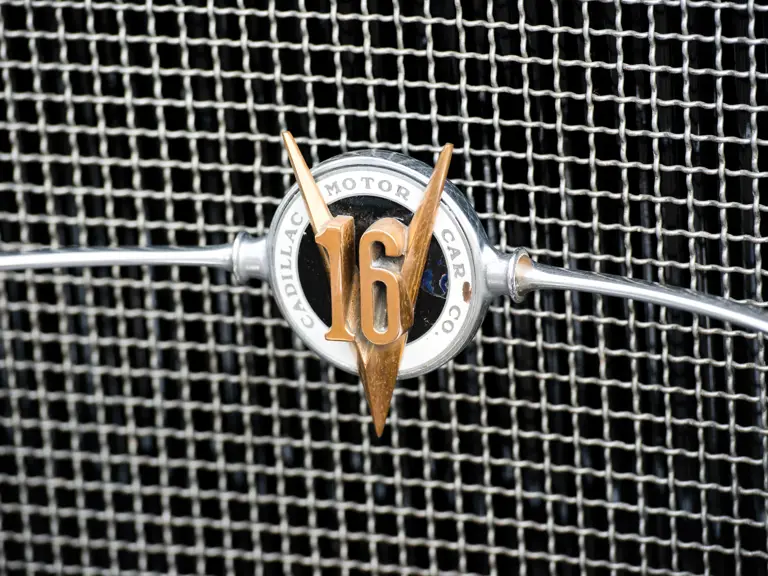
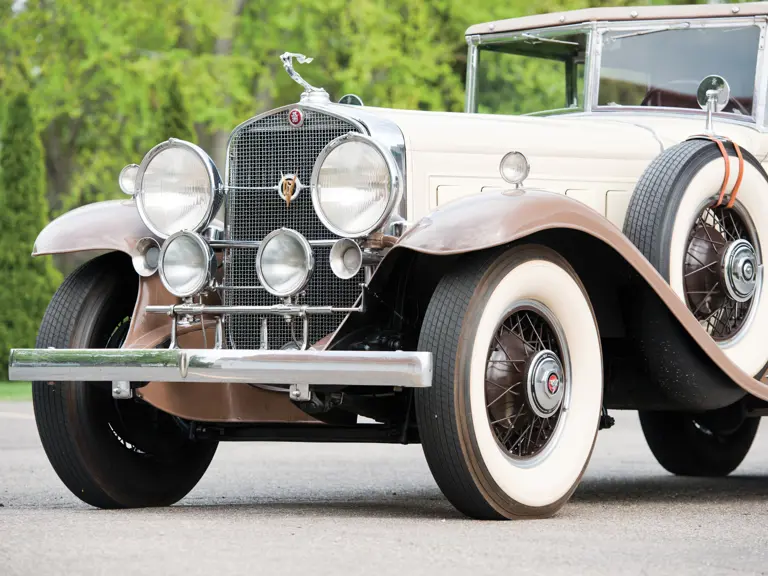
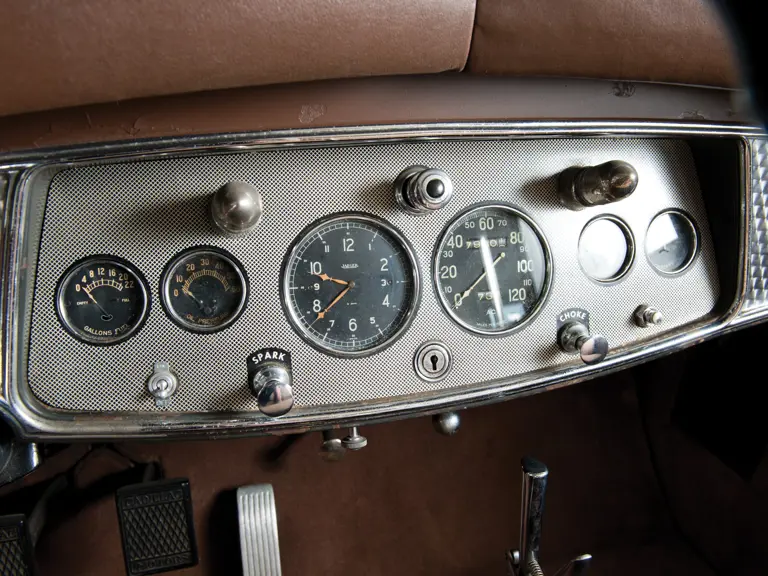
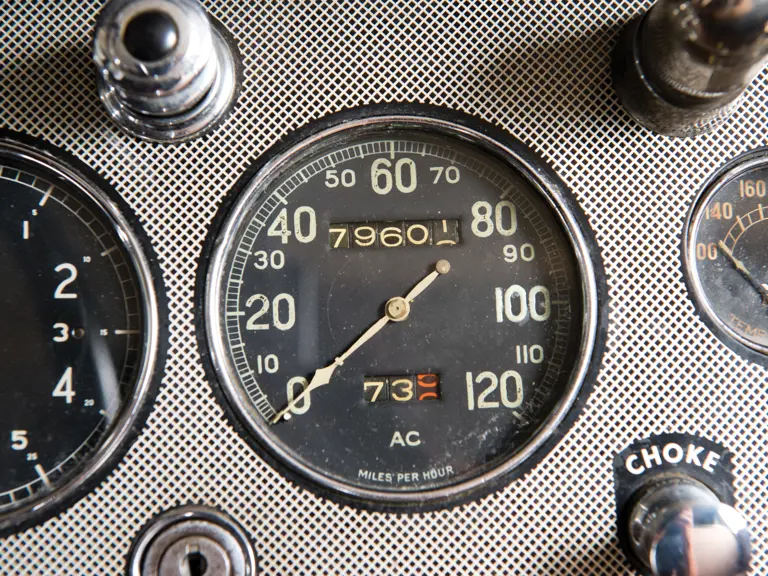
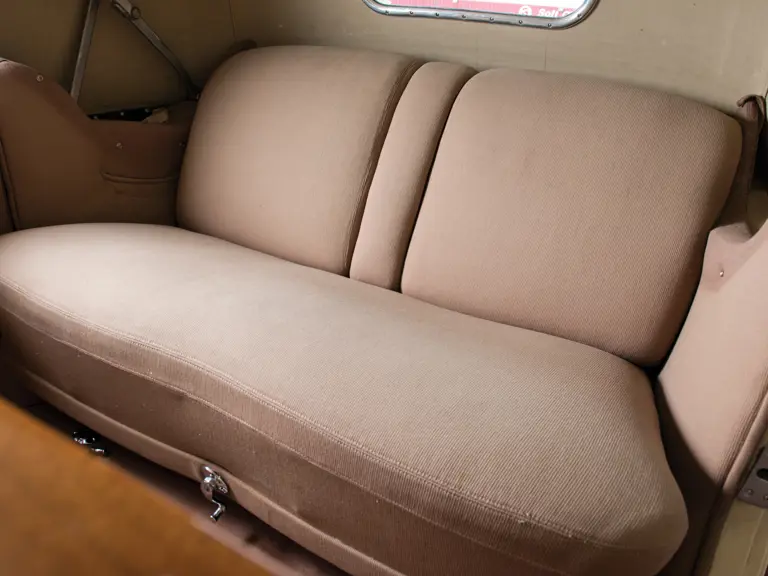

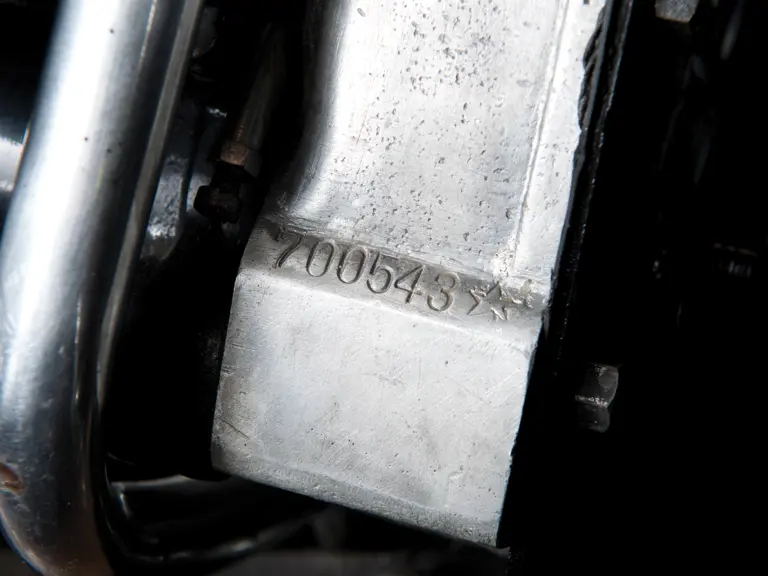
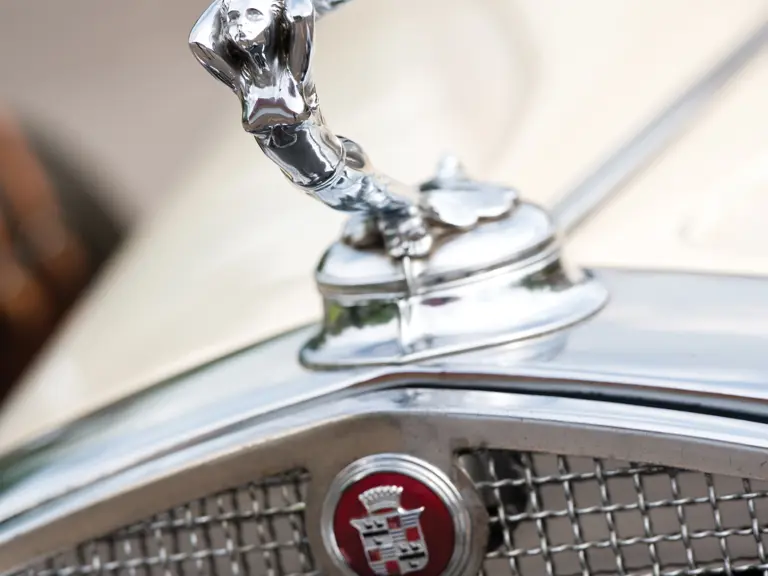
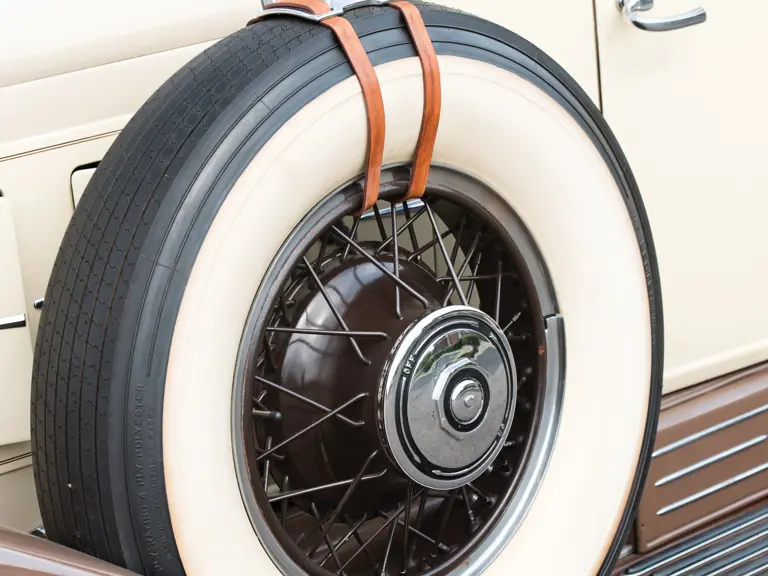
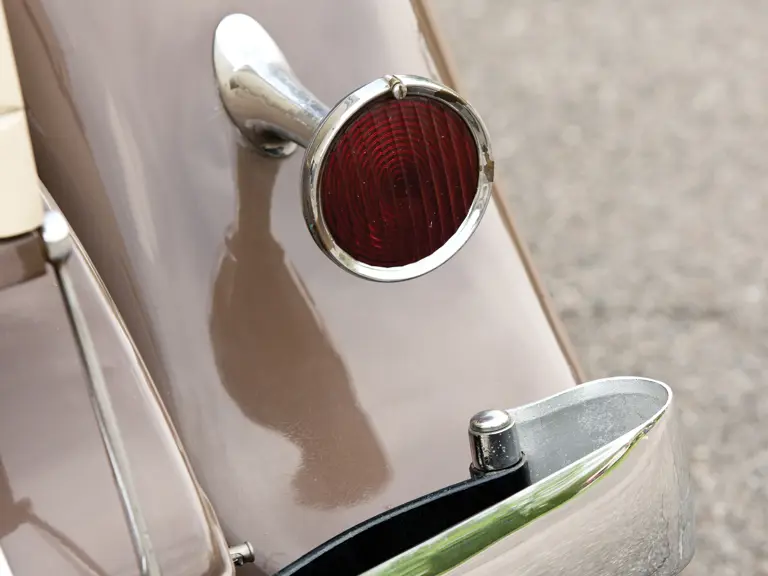
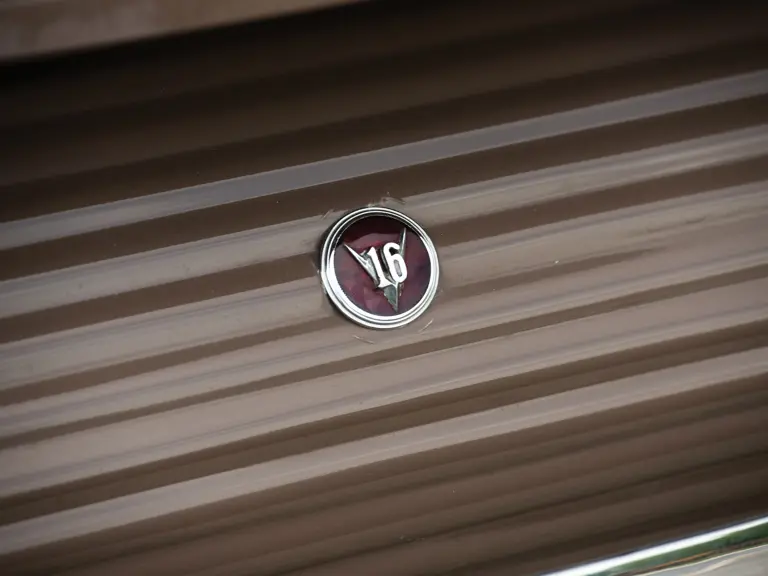
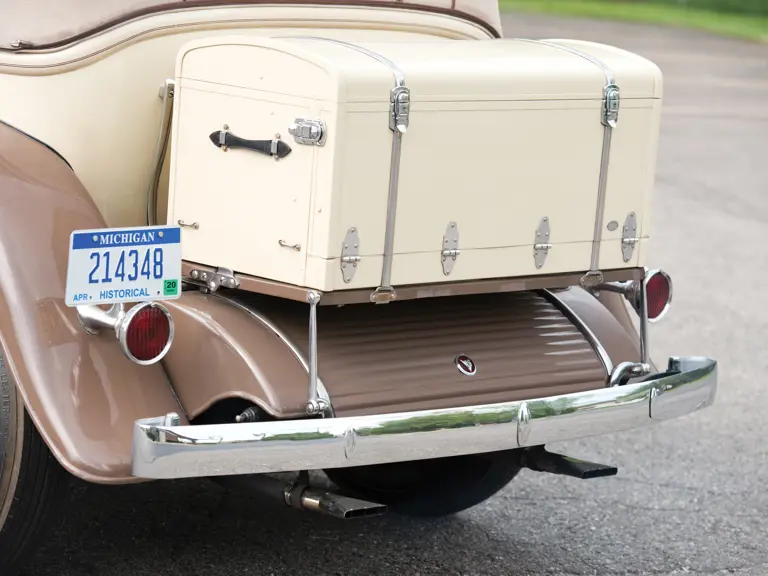
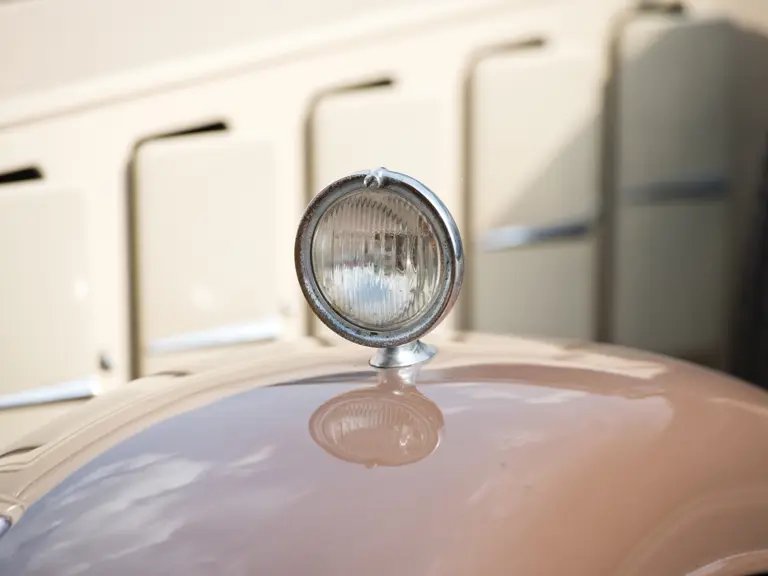
 | Plymouth, Michigan
| Plymouth, Michigan
